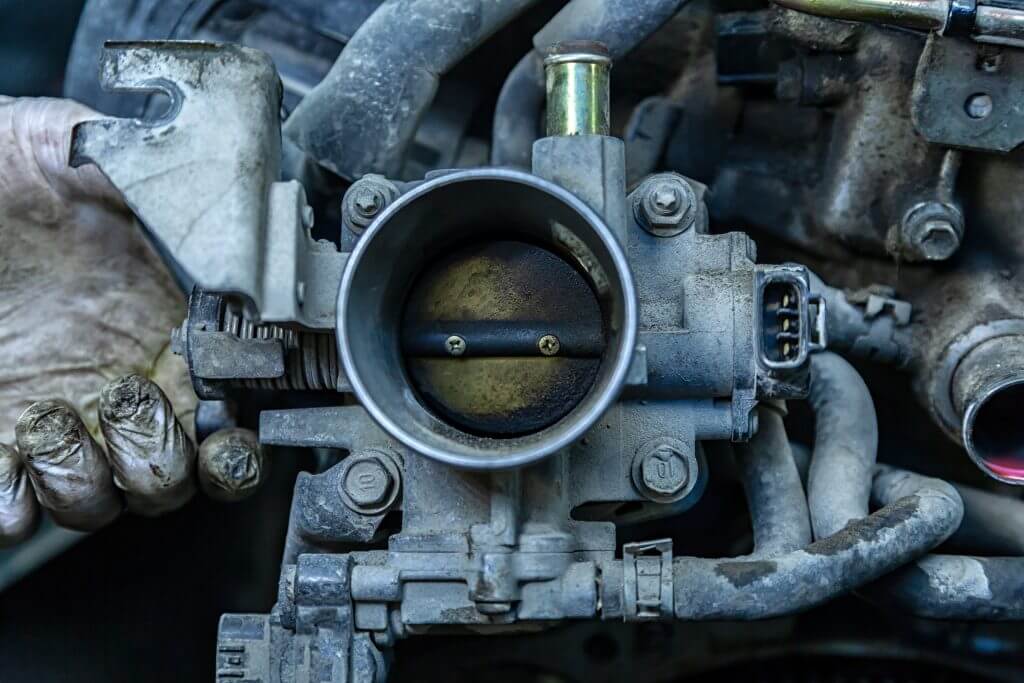Improving Throttle Response Is an Intermediate Level Modification for Most DIYers. Here’s Everything You Need to Know to Improve Your Throttle Response at Home.
- DIY Difficulty Level: Intermediate
- Time Required: A few hours
- Tools & Materials:
What Is Throttle Response?
Throttle response is the time it takes for your car to respond when you step on the gas pedal. A throttle is a device used to control the speed of an engine. In a vehicle, the throttle is located outside the engine and is connected to the gas pedal. Stepping on the gas pedal opens the throttle and allows more air to enter the engine. This increase in airflow causes the engine to speed up, and throttle response is a measure of how quickly this speed increase occurs.
The ideal throttle response is fast enough to provide power when needed but not so fast that it causes the engine to bog down. Several factors can affect throttle response, including engine size, fuel type, and turbocharger lag. Some engines are naturally more responsive than others, but there are also many ways to improve throttle response. For example, installing a larger throttle body or using a higher-octane fuel can help to increase throttle response.
Is It Safe to Drive With a Bad Throttle Response?
A car with a poor throttle response can be dangerous to drive. If the engine takes too long to respond when you step on the gas, it can cause you to lose control of the car. This is especially dangerous when merging onto a highway or making a turn.
The average cost for throttle response improvement is $150-$300. This job should take roughly two hours to complete. It’s an intermediate-level job, which means that it’s best suited for those with some experience working on cars. If you feel confident in your abilities and have the necessary tools, it might be worth doing at home. However, if you’re not confident in your skills or don’t have the right tools, it might be better to take your car to a professional mechanic.
When to Replace Your Throttle or Upgrade Your Throttle Response
How often you should replace your throttle or upgrade your throttle response depends on a few factors, including how often you drive and the conditions you typically drive in. If you only use your car for short trips around town, you might not need to upgrade as often as someone who takes their car on long highway drives. Similarly, if you live in an area with a lot of stop-and-go traffic, you might need to upgrade more often than someone living in a rural area. Ultimately, it’s important to check your throttle response regularly and upgrade or replace it when necessary.
What Are Common Signs Indicating You Need to Improve Your Throttle Response?
Throttle response is one of the most critical factors in determining a vehicle’s performance. If your throttle response is poor, it can hamper your acceleration and make it difficult to maintain control of your car. If you notice any of the following signs, it may be time to improve your throttle response:
- Your car is slow to accelerate.
- You have to press the gas pedal down too far to get your car to move.
- Your engine is bogging down when you try to accelerate.
- You’re losing control of your vehicle when you step on the gas pedal.
Keep in Mind
One way to keep your car running smoothly is to follow the manufacturer’s recommended maintenance schedule. This schedule is designed to improve throttle response, prevent wear and tear on engine parts, and improve fuel economy. By following the schedule and doing this service as advised, you can keep your car running at its best. In addition, you may also want to have your vehicle serviced by a professional mechanic every few months to ensure that it’s in good condition.
While upgrading or replacing your throttle response, you might also want to consider regular oil changes and tune-ups to help improve throttle response and prevent engine damage. Regular tire rotations can also help to improve fuel economy and extend the life of your tires. So whether you’re changing your own oil or taking your car in for service, always follow the manufacturer’s recommended maintenance schedule. Your car will thank you for it.
How to Get Better Throttle Response
Any car enthusiast knows that throttle response is essential for a smooth, enjoyable ride. Unfortunately, poorly maintained cars can often suffer from unresponsive throttles, leading to a jerky, jarring driving experience. Luckily, there are a few simple ways to improve throttle response and make your car feel like new again.
Step 1: Install a Cold Air Intake
One of the best ways to improve throttle response is to install a cold air intake. This will help improve airflow into the engine, leading to quicker acceleration. In addition, a cold air intake can also help to improve fuel economy.
Step 2: Upgrade the Exhaust System
A well-designed exhaust system can also help to improve throttle response. By upgrading the exhaust, you can improve airflow out of the engine, which translates to more power and quicker acceleration.
Step 3: Install a Throttle Body Spacer
Another way to improve throttle response is to install a throttle body spacer. This device helps improve airflow into the engine by creating more space between the throttle body and the intake manifold. This can lead to a more responsive throttle and quicker acceleration.
Step 4: Replace Spark Plugs and Wires
Over time, spark plugs and wires can become worn out, leading to poor engine performance. By replacing these parts, you can help to ensure that your engine is getting the proper amount of ignition, which can lead to a better throttle response.
Step 5: Change Air Filters
If your air filters are dirty, it can restrict airflow and lead to poor engine performance. By changing your air filters, you can help to improve airflow and throttle response.
Still Need Help?
Want an expert mechanic on speed dial who can walk you through DIY repairs and answer any questions? Join FIXD Mechanic Hotline for unlimited access to our Master Mechanics Monday-Friday, 8 a.m.-8 p.m.
Disclaimer: The guidelines in this article are general and not meant to replace instructions for your specific vehicle. Please consult your owner’s manual, repair guide, or a professional before attempting repairs.

At FIXD, our mission is to make car ownership as simple, easy, and affordable as possible. Our research team utilizes the latest automotive data and insights to create tools and resources that help drivers get peace of mind and save money over the life of their car.














